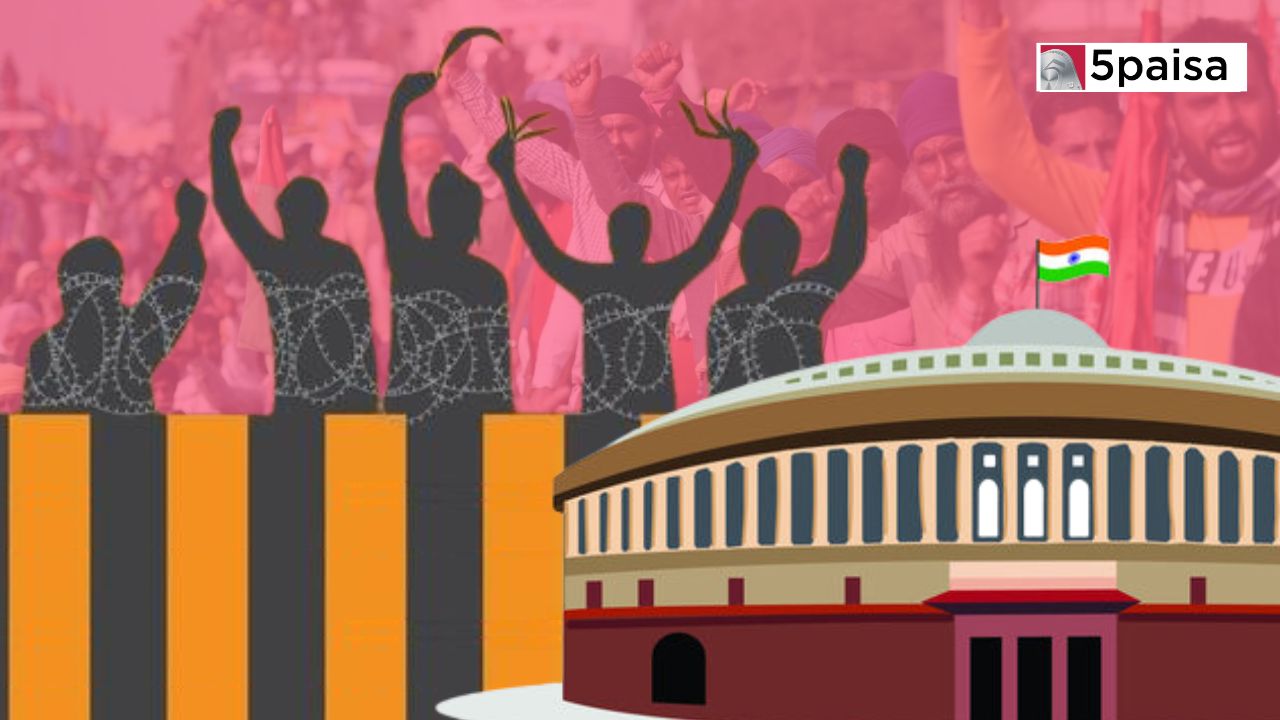Weekly Wrap-Up: Farmers vs Government Again?

Last Updated: 28th February 2024 - 04:54 pm
In recent years, India has witnessed widespread protests by farmers, particularly around national capital, with demands primarily revolving around securing legal guarantee for Minimum Support Prices (MSP). These protests have sparked debates across nation, raising crucial questions about agricultural policies, farmer welfare, & sustainability of India's agricultural sector.
To delve into intricacies of ongoing farmers' agitation & MSP conundrum, let us embark on journey through various facets of this complex issue.
Why Farmers Are Protesting?
Farmers' protests, which gained momentum in recent times, stem from myriad of grievances accumulated over years of neglect & unmet promises. However, primary trigger for agitation revolves around demand for legal guarantee for Minimum Support Prices (MSP). Unlike previous protests, where specific contentious farm laws were focal point, this time, farmers are advocating for more fundamental reassurance in form of MSP protection.
Understanding MSP System
Minimum Support Price (MSP) system, instituted by government, serves as safety net for farmers by ensuring minimum price for their produce. Every season, government announces MSP rates for range of crops, including both Kharif & Rabi crops, based on recommendations from Commission for Agricultural Costs & Prices (CACP). Objective of MSP is to provide farmers with remunerative prices, promote agricultural investment, & mitigate income uncertainties.
Farmer-Suggested Calculation of MSP
Central to farmers' demands is adoption of Swaminathan Commission's formula for calculating MSP. Proposed by National Commission on Farmers, chaired by M S Swaminathan, this formula advocates setting MSP at 1.5 times comprehensive cost of production (C2), which encompasses all input costs, including imputed value of family labour & capital assets. This formula aims to ensure fair & remunerative prices that adequately cover farmers' production costs, thereby enhancing their income & livelihood security.
Why Government is Opposing Farmer Calculation of MSP?
Government's reluctance to embrace Swaminathan formula stems from concerns over its fiscal implications & market distortions. While farmers argue for comprehensive cost-based MSP, policymakers express apprehensions regarding financial burden & potential disruptions in market dynamics. Implementation of such formula would require significant budgetary allocations & could lead to market distortions, impacting consumers & taxpayers alike.
Current MSP vs. Swaminathan Formula - Difference
1. Disparity between current MSP mechanism & Swaminathan formula lies in method of cost calculation.
2. While existing MSP is often pegged to A2+FL (paid-out costs & imputed value of family labor), Swaminathan formula advocates for more comprehensive approach, incorporating factors like interest on capital, land rent, & other overhead expenses (C2).
3. This shift towards more inclusive cost calculation aims to provide farmers with prices that truly reflect economic realities of agricultural production.
Addressing Storage Issue in Indian Agriculture
1. Apart from MSP concerns, another pressing issue plaguing agricultural sector is lack of adequate storage infrastructure.
2. India's agricultural produce often faces post-harvest losses due to insufficient storage facilities, leading to wastage & reduced income for farmers.
3. Addressing this challenge requires substantial investments in modern storage facilities, cold chains, & logistics infrastructure to ensure efficient handling & preservation of agricultural commodities.
Conclusion
In conclusion, ongoing farmers' protests & debate surrounding MSP underscore urgent need for comprehensive agricultural reforms aimed at addressing concerns of farmers, ensuring fair prices, & enhancing resilience of India's agricultural sector. By embracing inclusive policies, investing in infrastructure, & fostering dialogue between stakeholders, India can chart path towards sustainable agriculture & rural prosperity.
- Flat ₹20 Brokerage
- Next-gen Trading
- Advance Charting
- Actionable Ideas
Trending on 5paisa
Business and Economy Related Articles
Disclaimer: Investment in securities market are subject to market risks, read all the related documents carefully before investing. For detailed disclaimer please Click here.
 Sachin Gupta
Sachin Gupta
 5paisa Research Team
5paisa Research Team




